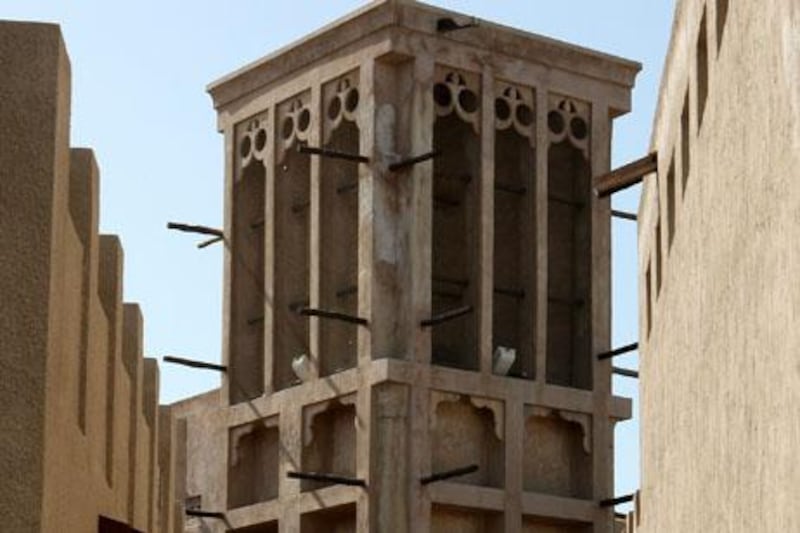Wind towers, long abandoned for the pleasures of air conditioning could again become a Middle Eastern architectural fixture, says a Dubai scientist who is integrating the traditional structure with a zero-energy cooling system.
Ben Hughes, a researcher at Heriot-Watt University's Dubai campus, recently received a grant worth US$1million (Dh3.67 million) from the Qatar National Research Fund to develop the technology over the next three years.
He has patented a similar natural cooling system, which he sold to Midtherm Engineering Ltd in England, that is now widely used in many countries. The only way the design will work here, he says, is if he is able to chill the captured air to a tolerable temperature.
"In Europe, there are cool breezes and it's really a matter of channelling that air in the right way," Mr Hughes said.
"Here, people rely on air conditioning and it makes up the majority of the country's energy use. If we can reduce that reliance, it would have a tremendous impact on the UAE's carbon footprint. But it won't work if we are only bringing in warm air."
His hope is to expand on the technology he has developed by using the region's hot climate in his favour. His design is similar to the way a refrigerator works, except that it will rely on gravity instead of a compressor, he said.
The structures capture hot air in their louvres and force it down into the building, in the same way as did systems built thousands of years ago. Mr Hughes's system will add a vertical pipe loop carrying an industrial alcohol-based mixture of liquid and solid refrigerant. Once it absorbs the heat of the air that is funnelled in, the material in the pipes becomes heavy, sinking and pushing the rest of the refrigerant back up through the loop. As it begins to return up through the cycle, the decrease in pressure causes the temperature to drop and the pipes release cool air into the building.
"I am relying on gravity and density in a way that no one else has considered for this type of project, and I believe this will cool the air enough that it will become a feasible alternative to air conditioning," Mr Hughes said.
Saud Ghani, the head of the department of mechanical and industrial engineering at Qatar University who is working with Mr Hughes on the project, said that he hoped the final product would eventually be available for consumer use.
"This will be the first project that will be completely making air conditioning using green technology, without the use of any type of outside energy," he said. "It's a novel thing that has never been attempted before, and will directly affect consumers, businesses, everyone in the world."
Mr Hughes hopes to apply the same concept to other research he is doing in the region. His work includes development of cooling systems for Emirates Airline's Airbus A380 planes, and research with the Swiss Centre for Electronics and Microtechnology on a floating solar island planned for Ras al Khaimah.





